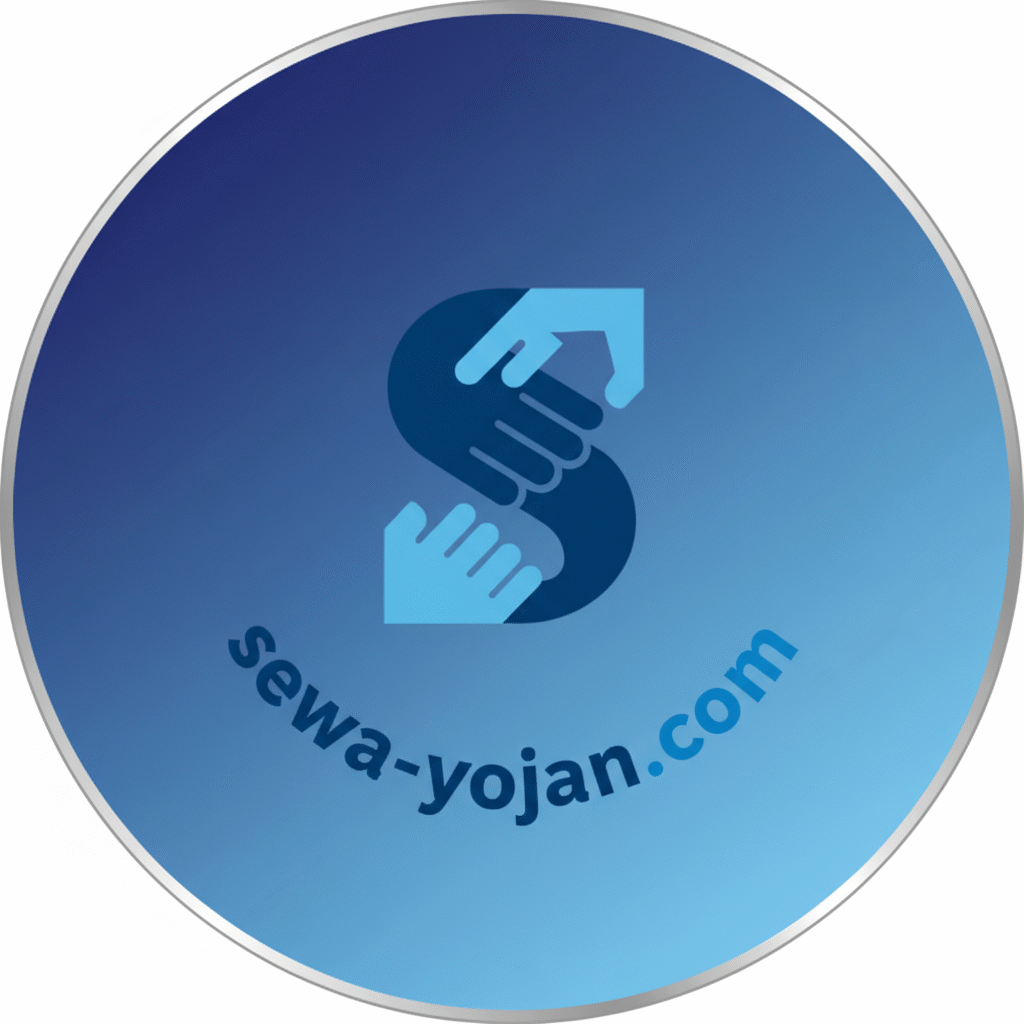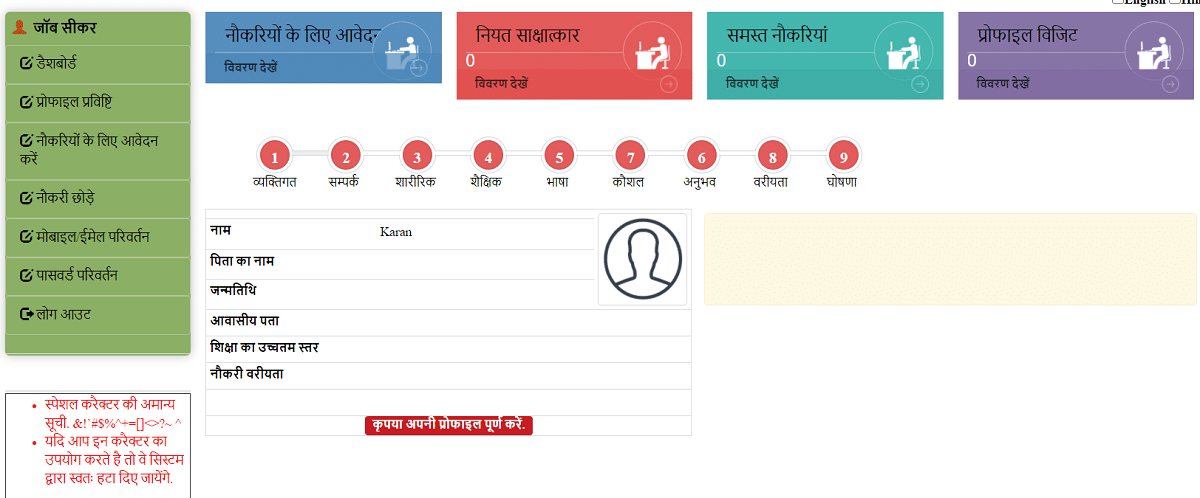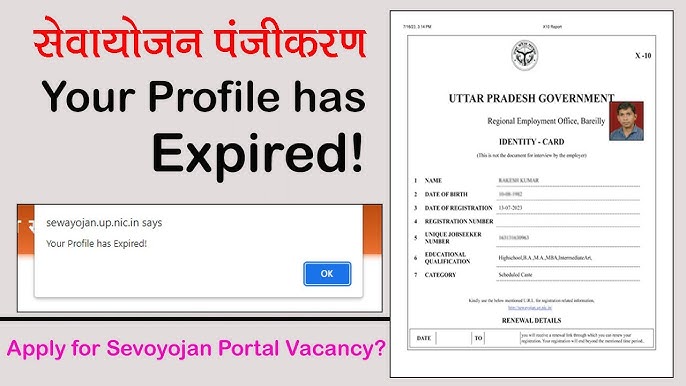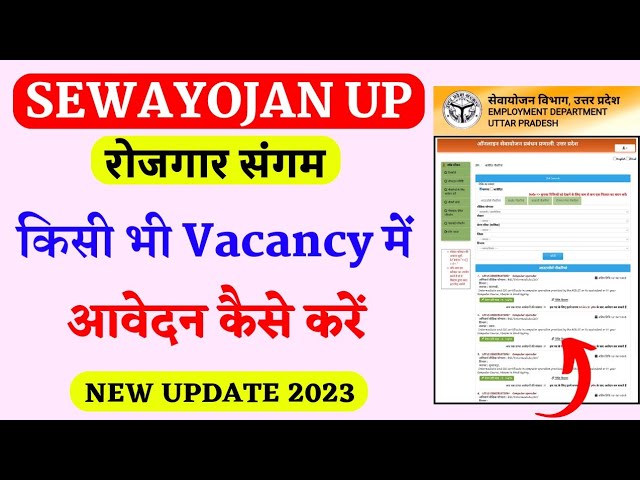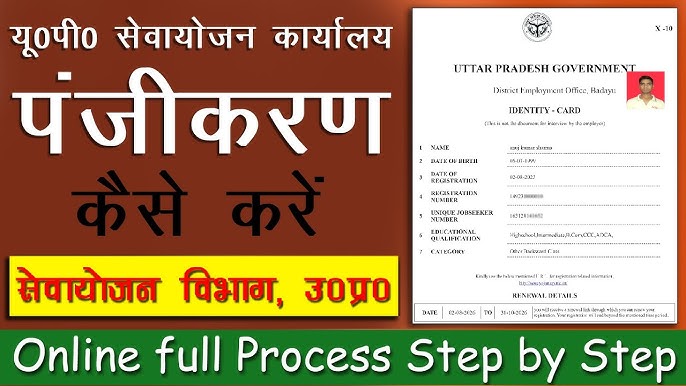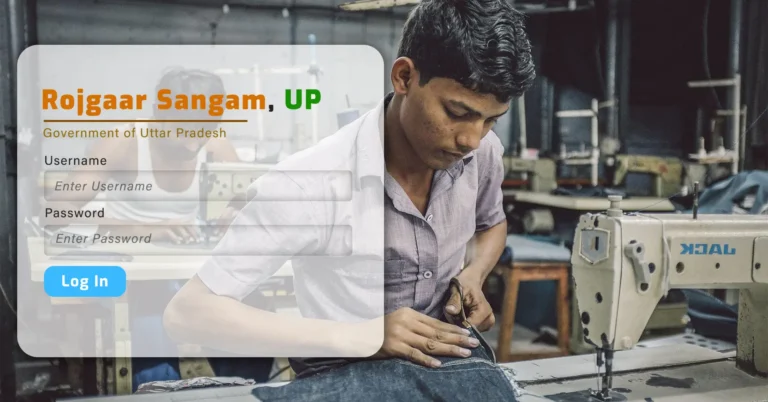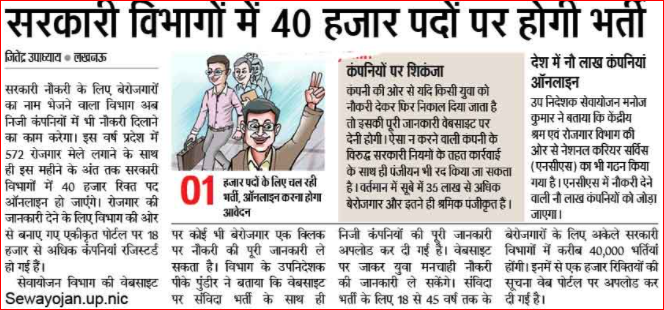www sewayojan org berojgari bhatta registration online: A complete guide, analysis, and future outlook
In recent years, India’s social welfare architecture has expanded to include targeted assistance for the unemployed, with special emphasis on women, rural youth, and marginalized communities. For many citizens seeking a reliable online pathway to access unemployment allowances and related services, the term www sewayojan org berojgari bhatta registration online has become a central search phrase. This article offers an authoritative, in-depth, and SEO-optimized exploration of that topic: what the platform represents, the history and objectives behind unemployment allowances, state-level rollouts, implementation mechanics, measurable impact, real success stories, the challenges encountered, comparisons with other schemes, and a forward-looking perspective on how such interventions can evolve. I also provide practical guidance for applicants and a focused FAQ section to resolve common doubts.
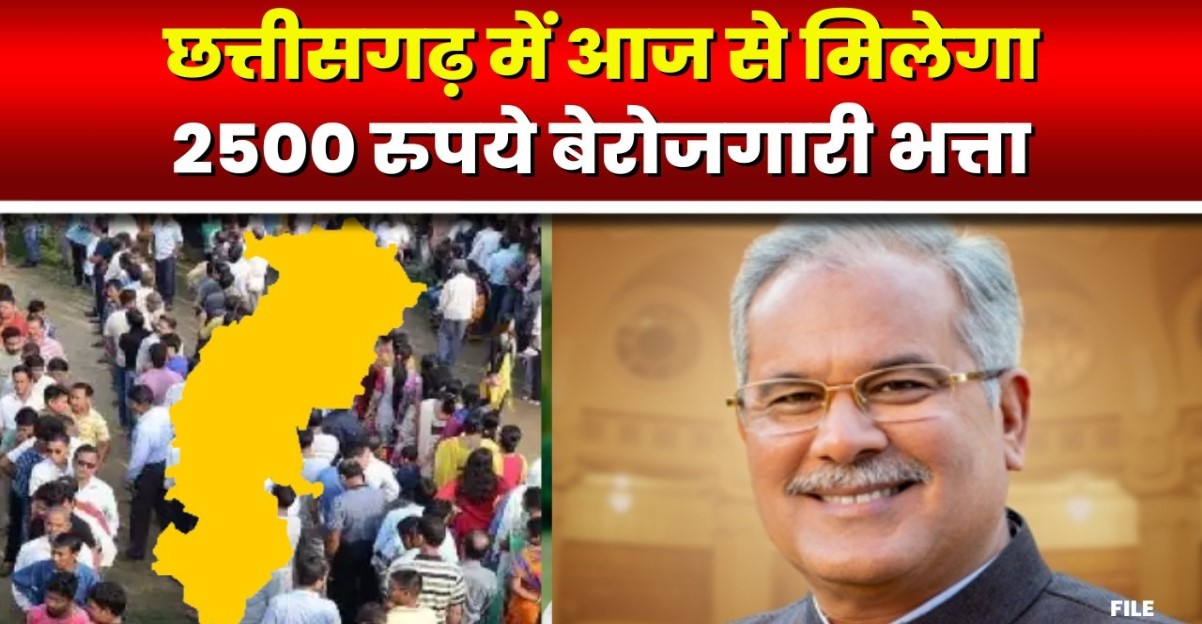
Understanding the phrase: what is www sewayojan org berojgari bhatta registration online?
At its core, www sewayojan org berojgari bhatta registration online refers to the process of registering for state-sponsored unemployment allowances or stipends through an online portal associated with social welfare and employment schemes. The phrase packs several components: an online domain or portal reference, the service category (sewa/yojan — service/scheme), and the specific program (berojgari bhatta — unemployment allowance) coupled with the action users typically search for (registration online). Citizens often use this phrase when seeking help to complete application forms, check eligibility, or track disbursements. The accessibility of such online registration portals marks a major shift from brick-and-mortar bureaucratic procedures to user-friendly digital interfaces aimed at improving coverage and reducing processing delays.
Historical background: the evolution of unemployment support in India
Unemployment support in India has a layered history that spans decades of policy experimentation. Early post-independence measures included public works programs and localized relief schemes intended to provide temporary employment. Over time, national-level initiatives like the National Rural Employment Guarantee Act (NREGA), now MGNREGA, institutionalized guaranteed work for rural households, changing the focus from pure cash assistance to employment-backed entitlements.
Parallel to employment guarantees, some states piloted direct unemployment allowances—particularly during economic distress or transitions—targeting youth and women with stipends, skill development-linked honoraria, or conditional cash transfers that preserve dignity while incentivizing re-skilling. That evolution, combined with the Digital India push, accelerated the migration of scheme administration to portals and registration sites, where queries like www sewayojan org berojgari bhatta registration online are now common.
Objectives of the unemployment allowance/berojgari bhatta approach
The policy rationale behind unemployment allowances is multifaceted:
-
Immediate income support: Provide a temporary safety net for individuals who have lost livelihoods or are transitioning between jobs, especially in informal sectors.
-
Skill and employability enhancement: Pair allowances with training modules to increase long-term employability rather than create dependency.
-
Gender equity: Offer targeted benefits to women who face higher unemployment or underemployment rates due to social constraints.
-
Regional balancing: Counteract regional disparities by incentivizing employment in lagging districts and rural zones.
-
Digital inclusion: Promote online registration and benefit transfers to improve transparency and reduce leakages.
A portal-related slogan such as www sewayojan org berojgari bhatta registration online captures not only the tech-enabled access to benefits but also the broader goals of linkage between assistance, skills, and accountability.
How registration works: a step-by-step procedural guide
While actual steps vary by state and specific scheme design, the typical flow for www sewayojan org berojgari bhatta registration online involves the following stages:
-
Eligibility check: Applicants verify basic eligibility—age, residency, unemployment status, income thresholds, and any priority category such as women, youth, or ex-workers in closed industries.
-
Account creation: Users create a secure profile on the portal and link identity proofs (Aadhaar, voter ID) and bank account details to enable Direct Benefit Transfer (DBT).
-
Form submission: The online form collects employment history, last drawn wages (if any), reasons for unemployment, and details about ongoing job search or upskilling efforts.
-
Verification: Back-end verification may include Aadhaar authentication, residence confirmation by local authorities, and cross-checks with employment exchange records.
-
Approval and disbursement: Once approved, stipends or allowances are disbursed to the linked bank account. The portal allows applicants to monitor status, upload additional documents, or appeal decisions.
-
Linkage to training: Many schemes mandate or encourage enrollment in training or job-matching services, which are also accessible via the same portal ecosystem.
By streamlining these steps through a single interface, www sewayojan org berojgari bhatta registration online reduces friction for applicants and enables administrators to manage large caseloads with improved traceability.
Policy framework: national vs. state-level design
Unemployment allowance schemes often exist within a layered governance structure. The central government provides overarching social protection principles and sometimes financial support, but states design specifics—eligibility thresholds, stipend quantum, duration, and conditionalities.
-
Central role: The Union government sets standards for digital service delivery, DBT norms, and identity authentication (e.g., Aadhaar). It also funds national programs and may support pilots in aspirational districts.
-
State flexibility: States decide on the breadth of benefits, implementation partners (e.g., NGOs, livelihood missions), and complementary programs such as urban employment initiatives or women-only stipends.
This federal flexibility is important because unemployment challenges and labor market dynamics differ markedly across states. Consequently, the phrase www sewayojan org berojgari bhatta registration online can map to distinct portals and forms depending on state-specific architectures, even if the policy intent is similar nationwide.
State-level impact: examples and patterns
The state-level rollout of unemployment allowances has yielded varying impacts, depending on administrative capacity, fiscal commitment, and local labor market structures.
-
Progressive adoption: States with better digital infrastructure and proactive social welfare departments have rolled out user-friendly online registration services faster, reducing in-person visits and processing times.
-
Women-focused schemes: Several states have tailored unemployment stipends for women, recognizing that female labor force participation is sensitive to safety, child care, and social norms. These schemes often bundle entrepreneurship mentoring and microfinance linkages.
-
Rural poor and seasonal distress: In agrarian states, allowances are sometimes oriented toward off-farm seasons to protect incomes during lean agricultural months, thereby reducing distress migration.
Where registration portals are integrated with local employment exchanges, job fairs, and skill centers, outcomes show higher reinsertion rates into meaningful work. The common user action—www sewayojan org berojgari bhatta registration online—thus becomes both a rights assertion and an entry point into broader livelihood services.
Implementation mechanics: technology, partnerships, and capacity building
Successful digital registration platforms do more than present an online form. Effective implementation comprises:
-
Robust backend systems: Scalable databases, secure authentication (Aadhaar or two-factor), and APIs for DBT and grievance redressal.
-
Frontline facilitators: Local facilitation centers, Common Service Centers (CSCs), and NGOs that assist digitally excluded applicants with registration and document uploads.
-
Inter-departmental integration: Linkages with labor departments, skill development missions, and women and child welfare services to create holistic beneficiary journeys.
-
Data privacy safeguards: Policies and technical measures to protect sensitive personal data collected during www sewayojan org berojgari bhatta registration online.
-
Monitoring dashboards: Real-time analytics for administrators to detect bottlenecks, map disbursement delays, and prioritize districts with high unemployment.
Well-implemented portals can substantially shrink the time from application to payment, easing the financial strain on families. Yet implementation gaps persist and expose the difference between good design and on-ground realities.
Success stories: where online registration made a measurable difference
Several anecdotal and documented examples across states illustrate how online registration for unemployment allowances has helped:
-
In villages where local Common Service Centers offered assisted registration, women who previously lacked digital literacy were able to enroll, receive stipends, and join short-term vocational training, eventually starting micro-enterprises.
-
Urban youth in industrial belts who lost jobs during a slowdown used online portals to obtain temporary allowances while being fast-tracked into reskilling programs offered by state partners.
-
States that linked portal registration with guaranteed public works saw smoother transitions: beneficiaries who completed training were given work opportunities under rural employment schemes, reducing long-term welfare dependence.
These stories highlight the leverage of combining www sewayojan org berojgari bhatta registration online with active placement and training services to create durable employment outcomes.
Challenges and pitfalls in online registration and delivery
No policy is immune to implementation challenges. Common issues encountered with www sewayojan org berojgari bhatta registration online include:
-
Digital exclusion: A significant segment of applicants lacks internet access, digital devices, or basic literacy. Without assisted registration, these groups remain marginalized.
-
Identity and documentation hurdles: Not everyone has clean, linkable identity proofs or bank accounts; documentation lapses stall approvals.
-
Delayed verification: Overburdened verification teams and manual processes can defeat the time-savings of online applications.
-
Fraud and duplication: Weak verification can lead to multiple registrations or ineligible beneficiaries receiving funds; strong back-end checks are essential.
-
Insufficient stipend amounts: Even when disbursed timely, the quantum of allowance may be too small to cover household needs, reducing the program’s effectiveness.
-
Dependency risks: Without strong linkage to skill development or placement, temporary allowances risk becoming long-term dependency traps.
-
Policy discontinuity: Changes in political leadership or fiscal pressures can lead to abrupt suspension of schemes, undermining trust.
Addressing these challenges requires not only technological upgrades but also an emphasis on human-centric design: assisted registration, clear communication, and ongoing monitoring.
Comparison with other countries’ unemployment support models
India’s blend of conditional cash transfers, public works guarantees, and state-level unemployment stipends is somewhat unique. Comparing with international counterparts offers useful lessons:
-
Unconditional cash transfers (e.g., some Latin American programs): These can rapidly reduce poverty but risk inflationary effects if not designed carefully. India’s conditional approaches aim to balance relief with incentives for reemployment.
-
Insurance-based unemployment benefits (common in developed economies): These rely on payroll contributions and formal sector employment. Given India’s large informal economy, insurance models have limited reach without significant adaptation.
-
Active labor market policies (ALMPs) in Europe: These focus on training, job search assistance, and employer subsidies; combining ALMPs with online registration portals can increase job placements among beneficiaries.
The hybrid model embedded in many Indian schemes—linking www sewayojan org berojgari bhatta registration online to training and public works—attempts to capture the strengths of multiple international approaches while accounting for India’s labor market structure.
Measuring success: metrics and evaluation
To evaluate the effectiveness of unemployment allowances registered via portals, policy analysts typically use a set of indicators:
-
Coverage and reach: Number and demographic breakdown of registered applicants.
-
Time to disbursement: Average days taken from registration to payment.
-
Re-employment rate: Percentage of beneficiaries who secured sustainable jobs within a specified period post-assistance.
-
Training completion and certification rates: For beneficiaries enrolled in skill programs.
-
Reduction in poverty or consumption smoothing indicators: Household surveys measuring food security and consumption expenditure.
-
Administrative cost-efficiency: Cost per beneficiary for registration, verification, and disbursement.
High-quality impact evaluations combine administrative data from portals like those used in www sewayojan org berojgari bhatta registration online with independent household surveys to triangulate outcomes and detect any unintended consequences.
Best practices for applicants: tips to navigate online registration
If you or someone you support is planning www sewayojan org berojgari bhatta registration online, follow these practical tips to improve the chance of a smooth experience:
-
Prepare documents in advance: Keep scanned copies of Aadhaar, bank passbook, proof of residence, and employment separation letters (if any).
-
Use assisted centers if needed: Visit a Common Service Center, local welfare office, or an NGO partner for help with the online form.
-
Record transaction IDs: After submission, note down application numbers and timestamps for follow-up.
-
Link bank correctly: Ensure IFSC and account numbers match your name and Aadhaar for seamless DBT.
-
Follow portal notices: Monitor the portal for status updates, training offers, or required corrective actions.
-
Preserve receipts: Keep digital or printed acknowledgments of registration for grievance redressal.
-
Avoid intermediaries demanding fees: Official registration is free; be cautious of agents promising fast-track approvals for a price.
These steps reduce processing delays and protect applicants from fraud.
Integrating women empowerment and rural development goals
A thoughtful unemployment allowance program recognizes the intersection with women’s empowerment and rural development. Key strategies include:
-
Women-only quotas and targeted outreach: Ensuring women are actively encouraged to register for stipends and linked to childcare-friendly training schedules.
-
Microenterprise incubation: Allowances combined with seed grants and mentoring to help women start small businesses in rural areas.
-
Local value-chain focus: Training tailored to regional agricultural or artisanal value chains increases the likelihood of sustainable livelihoods.
-
Community mobilization: Working with self-help groups and panchayats for collective action and monitoring.
Combining www sewayojan org berojgari bhatta registration online with gender-sensitive program design amplifies the development returns on public spending.
Institutional partnerships: NGOs, private sector, and academia
Effective schemes often involve cross-sector partnerships:
-
NGOs provide outreach, digital facilitation, and contextualized training in remote areas.
-
Private training providers and industry partners offer placement-linked skilling modules.
-
Academic institutions can help design evaluation frameworks and produce rigorous evidence on program outcomes.
-
Financial service providers expand access to no-frills bank accounts and digital payments.
Such collaborations convert a portal-based registration point into a comprehensive ecosystem that links stipend recipients to long-term growth opportunities.
Governance and transparency: minimizing leakages
Digital registration systems can greatly improve transparency through mechanisms such as:
-
Public dashboards showing disbursement statistics and geographic coverage.
-
Authentication logs for who accessed records and when.
-
Grievance redressal trackers where applicants can lodge complaints and monitor resolution.
-
Randomized audits and beneficiary verification surveys.
These governance tools reduce corruption risks and improve the credibility of www sewayojan org berojgari bhatta registration online initiatives.
Financial sustainability and budgetary implications
Providing unemployment allowances at scale requires careful fiscal planning. Important considerations include:
-
Targeting efficiency: Narrowing eligibility to those most in need reduces fiscal pressure while improving impact.
-
Time-bound benefits: Designing allowances as temporary support to bridge to reemployment keeps programs affordable.
-
Conditionality and co-financing: Linking benefits to training modules or workfare can reduce long-term costs and improve outcomes.
-
Macroeconomic sensitivity: During downturns, schemes can be scaled up temporarily as automatic stabilizers.
Sound financial management ensures that portals and disbursements remain reliable over electoral cycles and economic fluctuations.
Future prospects: what comes next for online registration and unemployment support?
As India advances its digital governance infrastructure, several promising developments can enhance the efficacy of www sewayojan org berojgari bhatta registration online:
-
AI-assisted case management: Automated checks to flag incomplete applications and assist verification teams.
-
Interoperable systems: Seamless data exchange between employment exchanges, skill missions, and welfare departments to reduce duplication.
-
Enhanced user interfaces: Multilingual, voice-enabled forms that reduce digital-literacy barriers.
-
Outcome-based financing: Partnering with outcomes funders who disburse payments based on verified placements and training completion.
-
Localized micro-targeting: Using granular labor market data to design region-specific stipends and skilling offers.
These changes can make online registration portals more equitable, responsive, and results-oriented.
One URL for official reference
For applicants and administrators looking for authoritative guidance and portal access, the primary reference point is the official scheme portal: https://www.sewayojan.org. This URL provides the registration interface, help resources, and official contact information for assistance.
Comparative reflection: why citizen-centric design matters
A recurring lesson is that the success of unemployment allowance registration systems depends less on flashy technology and more on user-centric design. Portals must be easy to navigate, empathetic to users’ realities (limited bandwidth, varying literacy), and backed by human facilitation. When people searching for www sewayojan org berojgari bhatta registration online find clear instructions, responsive support, and predictable benefits, trust builds and the program’s social value multiplies.
Policy recommendations for scaling impact
To strengthen unemployment allowance programs deployed via online registration, policymakers should consider:
-
Investing in assisted digital access points to bridge the access gap for women and rural households.
-
Building stronger linkages between stipends and active labor market programs to prevent dependency.
-
Standardizing data protocols across states to allow machine-readable portability and reduce fraud.
-
Allocating earmarked funds for monitoring and independent impact evaluations.
-
Promoting transparency through public dashboards and third-party audits.
Such measures reinforce the institutional backbone that makes www sewayojan org berojgari bhatta registration online a durable public good rather than a transient relief measure.
Real-world considerations for stakeholders
-
For applicants: Keep all documents ready, leverage assisted centers, and actively pursue linked training opportunities.
-
For administrators: Prioritize user feedback loops and simplify verification workflows to reduce bottlenecks.
-
For civil society: Partner in outreach and monitor inclusion, especially among women, persons with disabilities, and marginalized castes.
-
For researchers: Conduct mixed-method evaluations that combine portal data with field surveys to capture nuanced outcomes.
Coordinated action among these stakeholders enhances the scheme’s effectiveness and fairness.
Conclusion: a practical, humane path forward
The search query www sewayojan org berojgari bhatta registration online represents more than a string of words typed into a search engine. It symbolizes a citizen’s pursuit of dignity, stability, and opportunity at a time of economic uncertainty. When anchored in good design, robust governance, and a commitment to inclusion, online registration portals can transform sporadic relief into a ladder toward sustainable livelihoods. Policymakers, technologists, frontline workers, and community organizations must work in tandem to ensure that registration is easy, benefits are timely, and the pathway from stipend to sustainable employment is clear.
By combining digital tools with human-centered outreach, and by maintaining rigorous evaluation and financial prudence, India can make unemployment allowances an effective, equitable instrument in its broader social protection toolkit. Whether you are registering for the first time or designing policy, the key is to focus on outcomes that restore income stability, build skills, and expand opportunities — turning an online registration into a real-life turnaround.
Frequently Asked Questions
What documents do I need for www sewayojan org berojgari bhatta registration online?
Typically you will need identity proof (Aadhaar or voter ID), proof of residence, bank account information with IFSC, and any employment separation documents if available. Keep scanned copies to upload during online registration or bring originals to an assisted service center.
How long does approval and disbursement take after www sewayojan org berojgari bhatta registration online?
Processing times vary by state and verification requirements. Where backend systems are efficient, disbursement may occur within 7–30 days. If additional verification is needed, it can take longer. Applicants should note their application ID and check portal status regularly.
Can women and rural workers access special benefits through www sewayojan org berojgari bhatta registration online?
Yes. Many state programs include women-specific components and rural targeting. The online registration often has category fields where women and rural applicants can indicate their status for priority processing or tailored interventions.
What should I do if my application via www sewayojan org berojgari bhatta registration online is rejected?
First, review the rejection reason on the portal. Common issues include documentation mismatches or bank account linkage errors. Correct and resubmit documentation or contact the portal helpdesk/grievance cell. Use local facilitation centers for assistance with appeals.
Is registration for www sewayojan org berojgari bhatta registration online free, and can I register through an agent?
Registration on official portals is free. Be cautious of agents or middlemen asking for fees. Use authenticated Common Service Centers or NGO partners for paid assistance only when clearly necessary and documented.
How does the scheme prevent fraud and duplication for www sewayojan org berojgari bhatta registration online?
Portals generally use Aadhaar authentication, bank DBT linkage, and backend cross-checks with employment exchanges and other public databases. Periodic audits and randomized beneficiary verification surveys are also used to reduce duplication.
Where can I find official help for www sewayojan org berojgari bhatta registration online?
Refer to the official portal https://www.sewayojan.org for authoritative guidance, application portals, helpline numbers, and updates. Use the portal’s grievance redress mechanism if you encounter issues.
